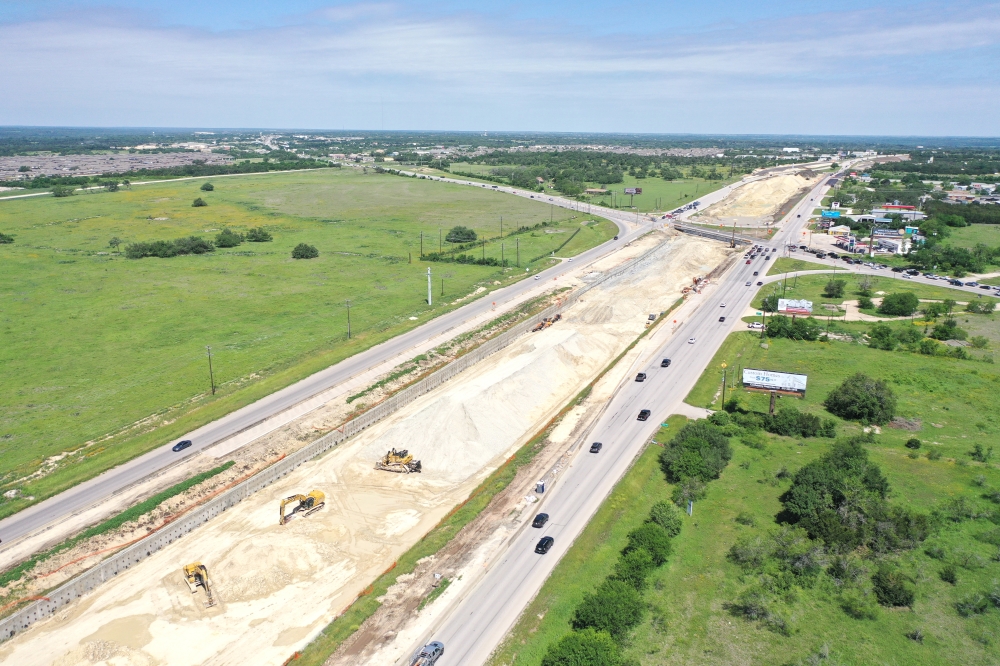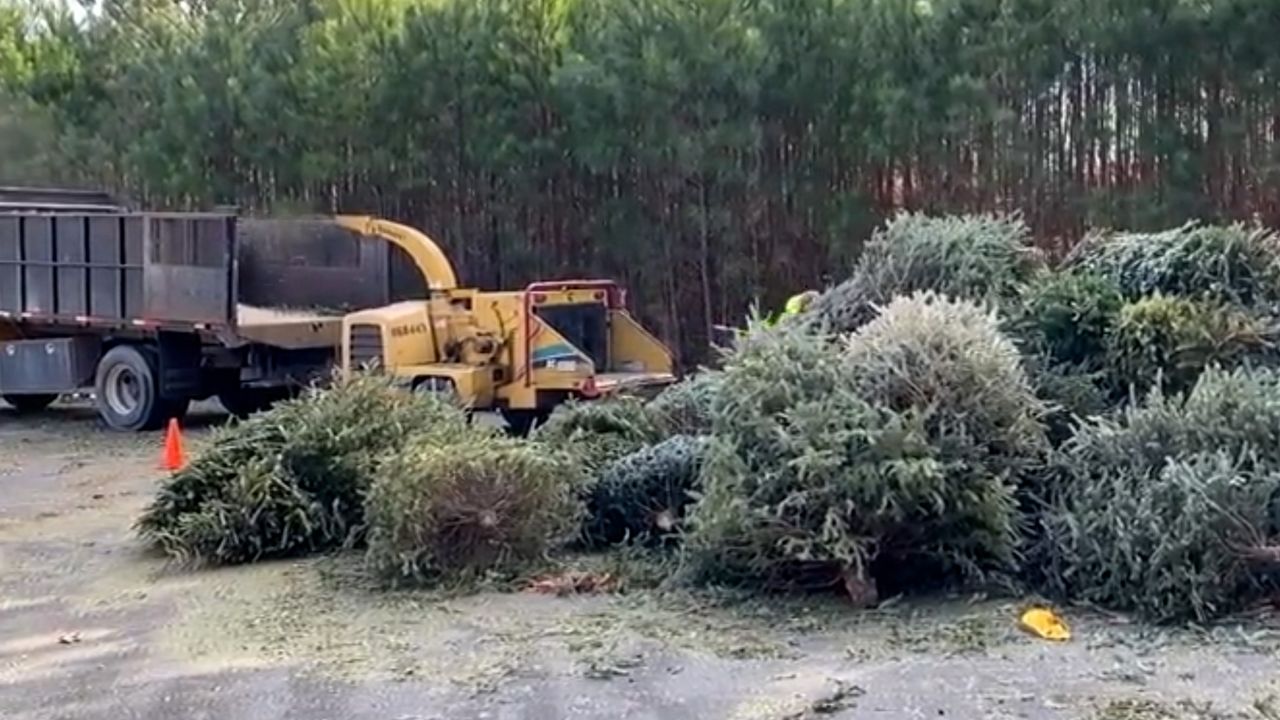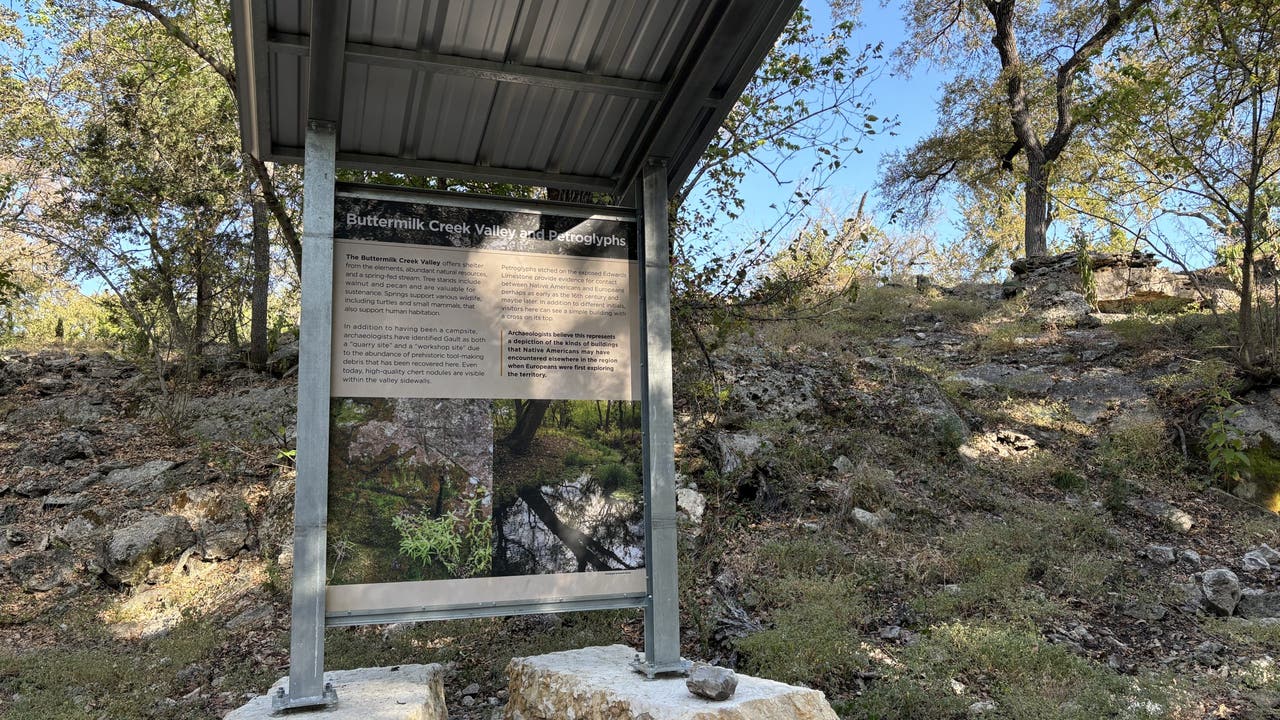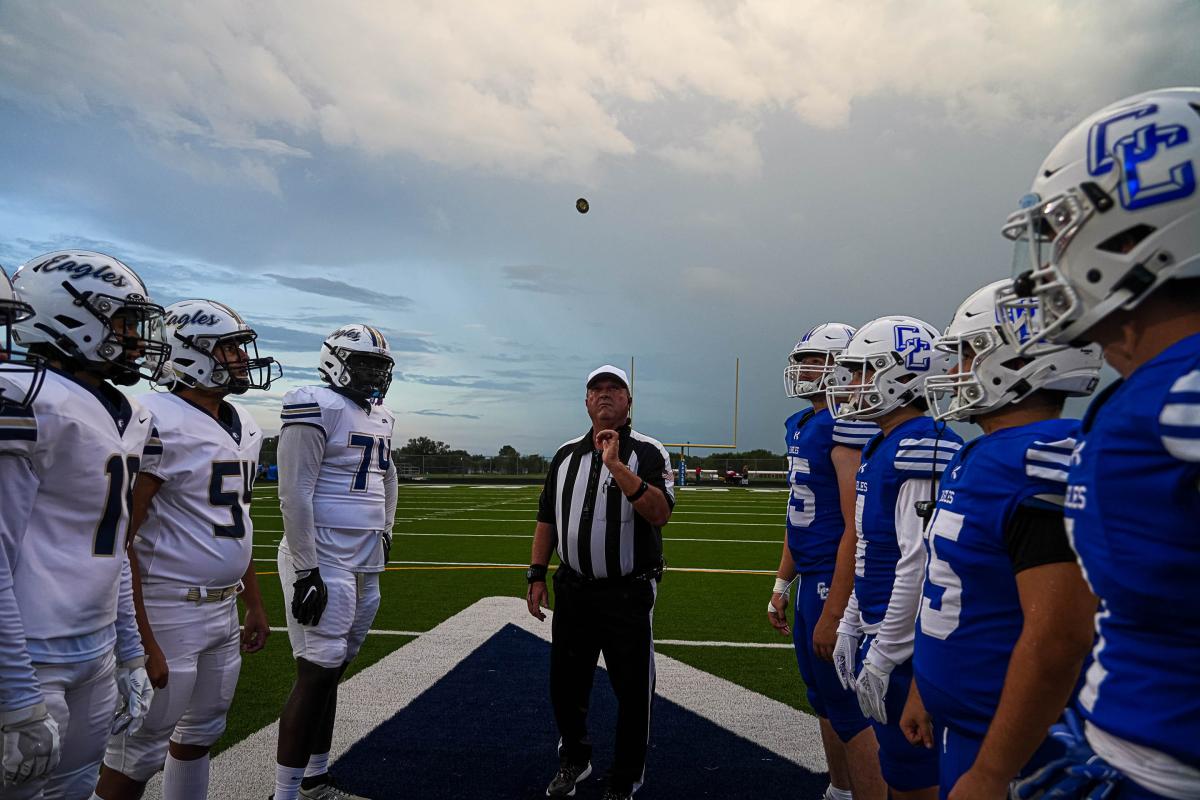Austin, TX
183A Toll extension through Leander, Liberty Hill hits halfway mark; aims to offer faster commute

Stretching from Hero Way in Leander to Hwy. 29 in Liberty Hill, the 5.3-mile extension will be built within the US 183 median between two existing frontage roads. It will consist of two tolled southbound and northbound lanes as well as a 7-mile, 10-foot shared-use path. Work on the $259 million project began in 2021, and it is on time to reach completion in 2025.
Once completed, the toll road is expected to save commuters time by eliminating four signalized intersections at San Gabriel Parkway, Bryson Ridge Trail, Whitewing Drive/Larkspur Park Boulevard and Hwy. 29.
“It is going to be a huge traffic reliever for the folks that commute south,” Williamson County Commissioner Cynthia Long said.
The project will maintain the existing frontage roads, keeping two nontolled lanes in each direction, Central Texas Regional Mobility Authority officials said. The work currently taking place in the project boundaries includes tunneling underground to build the extended 183A underneath Hwy. 29; beginning construction on the new Hwy. 29 overpasses over 183A; erecting retaining walls; and installing drainage systems and utilities.
This extension is the third phase of the 183A Toll project. The Mobility Authority is expanding the toll road north as the population in Liberty Hill is expected to grow to 112,420 by 2042 and Leander to 163,414 by 2040, according to the cities’ data.
“It’s unbelievable growth, and [US] 183 is our main thoroughfare, so everyone is going to be dumping onto that,” said Kat Howell, a long-term Leander resident and town historian. “Expanding that direction is an absolute must.”
Mapping it out
In March 2007, Phase 1 of the 183A Toll project system from RM 620 to RM 1431 was completed. The 5-mile Phase 2 extension from Cedar Park to Hero Way in Leander opened in April 2012.
“The first plans for [183A] were put on the map in 1985. … It took 22 years to get to that first phase,” Long said. “The second phase was completed six or seven years ahead of schedule because of the demand.”
Since the 183A project began, substantial commercial and residential growth has occurred along that corridor, said Mike Sexton, acting director of engineering at the Mobility Authority.
On US 183 near the San Gabriel River in Leander, traffic volumes were 18,400 a day in 2011, according to Texas Department of Transportation data. This number increased to 40,209 cars a day in 2021, a 118.5% jump.
A Mobility Authority environmental study determined the average annual daily traffic projections for the third phase of the 183A toll system.
On 183A from Hero Way to Bryson Ridge Trail, traffic is predicted to increase from 22,200 vehicles per day in 2016 to 64,800 in 2042. From Bryson Ridge Trail to Hwy. 29, it’s projected to increase from 33,800 to 92,300 during the same timeframe.
“Any improvements that can and will be done to … [US] 183 will help hopefully alleviate some of that traffic,” Liberty Hill City Administrator Paul Brandenburg said.
Liberty Hill Director of Planning Jerry Millard said he foresees increased economic development happening as a result of the new toll road.
“You have a high-traffic corridor; I think that’s what businesses are looking for,” he said.
From 2007-18, property values along the 183A Toll grew by more than $1.2 billion, a 171% increase, according to Mobility Authority data. Additionally, sales taxes collected within a half mile of 183A increased by 137% from 2010-17 to $2.9 million.
Leander Economic Development Director Randall Malik said having frontage roads allows the city better access to development tracts right off 183A, which attracts developers.
“We believe that the completion of the project … is going to fast track the type of developments our peer cities such as Georgetown, Round Rock, Cedar Park all benefit from with their completed infrastructure,” Leander City Manager Rick Beverlin said.
The latest extension
The Mobility Authority is conducting construction along the entire length of the new extension simultaneously.
Drill shafts and bridge columns are nearly complete, Mobility Authority officials said, and the remaining work includes building retaining walls and placing bridge beams. Five bridges carrying 183A and one overpass will be built along the 5.3-mile extension.
Hwy. 29 is the only intersection that will allow the extended 183A tolled lanes to travel under a new bridge at Hwy. 29. Tunneling work is being conducted to allow for this.
Work on a new pedestrian bridge over the San Gabriel River has started, but construction on the shared-use path spanning from Hero Way to Seward Junction Loop remains to be done.
Sexton said because the toll road is being built between two existing frontage roads, a lot of the impacts of the work are minimized.
In the months prior to opening the extension, the Mobility Authority will determine toll rates based on factors such as demand and the agency’s financial obligations for construction and maintenance of the road.
Williamson County has spoken to the Mobility Authority about the possibility of an additional extension, should the growth in the area continue.
While Sexton said the agency does not have plans to extend the 183A corridor right now, the Mobility Authority will monitor the growth to see if it justifies more construction in the future.
“Transportation planning is a marathon, not a sprint; it is sometimes 20-plus years from the time you plan something until you actually start construction on it,” Long said. “Getting those plans in place as soon as we can is vital if we want to be prepared for the future.”

Austin, TX
Immigration drives nation’s population growth • Kansas Reflector

A recent immigration surge brought newcomers to every state this year, helping to offset a continued drop in U.S. births while contributing to a national upswing of about 3.3 million new residents, according to new U.S. Census Bureau estimates.
Texas and Florida continued to dominate state population growth, together adding more than 1 million people from mid-2023 to mid-2024 and making up almost a third of the nation’s population increase. The state numbers include births, deaths, immigrants and residents moving from other states.
Nationally, this year’s population growth was up from the 2.8 million increase in 2023 and the 1.9 million boost in 2022, according to state population estimates released Thursday.
The population jump — the largest single-year increase since 2001 — was buoyed by a 21% increase in net immigration.
Immigration has become a more significant factor in population changes, making up all or almost all the growth for 18 states in every part of the country this year, according to an analysis of the data by William Frey, a demographer for the Brookings Institution, a left-leaning think tank.
“This points up the importance of immigration, not just to a couple of big states but to a broad swath of our country,” Frey said. “It’s going to be very welcome in a lot of places that would not be gaining many people or [would be] losing people because of lower fertility and higher deaths.”
Immigration grew in every state, ranging from an increase of about 69,000 people in Florida and California and 57,000 in Texas, down to a few hundred in Montana and Wyoming. The growth in the immigrant population ranged from 19% in Alaska to 36% in Montana.
California and Illinois were among states that had lost residents earlier in the decade, and their growth over the past year could help both stem expected losses in congressional representation after the next nationwide census in 2030.
If the growth continues, it would trim California’s loss to three seats in the U.S. House of Representatives instead of four, and Illinois could lose one seat instead of two, said Kimball Brace, a Virginia-based redistricting expert.
Florida, where growth has slowed slightly, could gain one fewer congressional seat than predicted — three instead of four, he said.
“Clearly immigration is coming into play — a couple years ago you had people talking about California going off the deep end [with population loss] and now it doesn’t look so deep,” said Brace, president of political consulting firm Election Data Services Inc.
California ranked third in the number of new residents from July 1, 2023, to July 1, 2024, according to census estimates, with a gain of about 233,000, thanks to both immigration and people moving in from other states. The Golden State was followed by North Carolina (165,000) and New York (130,000). Illinois grew by about 68,000 and Louisiana by about 9,700.
Florida and Texas also were the leaders in percentage change, growing about 2% in that year, followed by Utah (1.8%), South Carolina and Nevada (both up 1.7%), and Idaho and North Carolina (both up 1.5%).
Only three states had population losses for the year, of a few hundred people each: West Virginia, Vermont and Mississippi.
In Texas, the cities of Houston, Austin and Dallas added the most new housing last year — almost 40,000 new units among them — and are likely to be the centers of new population growth, according to a state report in November. Collin County, a Dallas suburb, is also one of the state’s fastest growing areas, with more than 16,000 new housing units added last year and almost 64,000 since 2020, according to the report.
Florida’s recent growth was concentrated in Jacksonville, Port St. Lucie, Miami, Tampa and Orlando, according to a state report this year.
A surplus of births over deaths helped most in New York, California, Pennsylvania, Ohio and Michigan.
New York City has built more housing, which helped stem net losses from people moving away, said Jan Vink, a senior extension associate at Cornell University’s Program on Applied Demographics.
That’s encouraging news for the state’s future, Vink said. In November, the university estimated that New York’s population could shrink by as much as 2 million people over the next 25 years because of low fertility rates and aging, unless those losses are offset by new arrivals in the form of immigration or people moving from other states.
Texas, the Carolinas, Florida and Tennessee had the largest numbers of new residents moving in from other states, though the numbers were down in all those states from the previous year as high interest rates and housing prices led more people to postpone moves.
Stateline, a States Newsroom affiliate, produced this report.
Austin, TX
Where to recycle your Christmas tree in Texas

TEXAS — Once the holidays have passed, you are encouraged to give your natural Christmas tree another life by recycling it at any number of locations in Texas.
Most drop-off sites open on Dec. 26, but check with your city or county ahead of time to confirm.
There are typically guidelines for tree mulching and recycling. Check with your local recycling location for specifics, but the following rules, provided by Travis County, usually apply:
- Only natural trees are accepted (no plastic/artificial trees)
- Remove all ornaments, decorations, lights and tree stands (wooden blocks)
- Remove all nails, screws, staples, wire and metal
- Trees sprayed with flocking or artificial snow are not accepted
- Do not place the tree in a “tree bag” or any plastic bag
- Netting or rope wrapped around the tree is not accepted
- Trees taller than 6 feet must be cut in half
Here are some locations where you can recycle your tree in Texas. The list isn’t exhaustive, so check online with your city or county for a location near you.
- For recycling in Travis County, click here.
- For the Austin area, click here.
- For San Antonio, click here.
- For Dallas, click here.
- For Fort Worth, click here.
- For El Paso, click here.
Austin, TX
Texas A&M vs USC preview: Scouting report, predictions for Las Vegas Bowl

Texas A&M football: A closer look at next opponent, USC
Tony Catalina sits down with Trojans Wire’s Adam Bradford to talk Aggies-Trojans.
All that’s left in the season for Texas A&M football is the Las Vegas Bowl. With one game left, the Aggies head west to take on the USC Trojans for the first time since 1977.
Texas A&M (8-4, 5-3 SEC) dropped out of the US LBM Coaches Poll at the end of the season, while the Aggies’ next opponent is fighting to finish above .500. USC is 6-6 overall and is 11th in the Big Ten at 4-5.
BUY TICKETS TO TEXAS A&M VS USC
Will A&M take care of business in the final game of 2024? Can they send off Year 1 under head coach Mike Elko on a good note? How will the Aggies fare down three key defenders up front? Can Elko and the Aggies secure a nine-win season for the first time since 2020?
Here’s a full scouting report for the Texas A&M Aggies vs the USC Trojans:
Texas A&M vs USC in Las Vegal Bowl
When: 9:30 p.m. Friday.
Where: Allegiant Stadium in Las Vegas.
TV: ESPN.
Radio: 1370 AM in Austin; 1150 AM, 93.7 FM in College Station.
Line: Texas A&M is favored by 3½.
Weather: Allegiant Stadium is a dome, rendering the weather to be a nonfactor.
Texas A&M vs USC history
All-time: USC leads 3-0.
Last meeting: 47-28 USC win (1977).
Most memorable meeting: It hasn’t been an extensive history between the two programs, and it hasn’t been a joyous one for the Aggies either. The latest matchup came in the 1977 Bluebonnet Bowl, played annually in Houston.
The final meeting between the Aggies and Trojans was also the last time A&M played in the bowl game. A&M lost to USC, 47-28, aided by a then-bowl record four-touchdown pass performance from USC’s Rob Hertel. Trojans’ running back Dwight Ford broke a school record with 94 rushing yards.
Know the foe: USC
Last game: 49-35 loss to Notre Dame.
Players to watch: Thanks to increased player movement, it’s oftentimes hard to get a beat on who will and won’t play in non-playoff bowl games. However, looking at the Trojans’ offense, their passing attack was led by sophomore wide receivers Makai Lemon and Zachariah Branch. The duo have combined for 93 receptions, 1168 yards and four touchdowns. Branch is in the transfer portal and is not expected to suit up against the Aggies.
The Trojans started the year with Miller Moss at quarterback, but thanks to USC making a switch, sophomore Jayden Maiava is the starting quarterback now. He has made the last three starts for the Trojans, while Moss has entered the transfer portal, reportedly joining Louisville ahead of the 2025 season.
As a starter, Maiava has totaled 840 passing yards, seven touchdown passes and three interceptions.
Central Texas connections: The USC Trojans football team is a national brand, and with that comes an extensive reach on the recruiting trail. As a result, the Trojans’ roster has its fair share of Texas natives. In total, 11 players call the Lone Star State home, including junior tight end Lake McRee who is from Austin and played at Lake Travis.
When Texas A&M has the ball
It will be interesting to see how the Aggies handle the Las Vegas Bowl, with 19 players reportedly in the transfer portal and at least Nic Scourton already forgoing the bowl game for NFL aspirations.
What Aggies fans can expect to see is Marcel Reed getting plenty of work with him being viewed as the unquestioned starting quarterback heading into the new season for the first time.
Also, preseason-projected starting running back Rueben Owens made his first appearance against the Longhorns in Week 14 following a knee injury that made him unavailable for most of the year. It will be interesting to see if they once again give him game action to close out the year.
Look for the Aggies to work in young players such as freshman wide receiver Ashton Bethal-Roman who finished the year with four receptions, 44 yards and one touchdown in limited action as they head into next season.
When USC has the ball
The Trojans’ passing game is well-documented. They enter the game with the 10th-best passing attack in the nation, averaging 291.7 yards a game. Maiava will be looking for Makai Lemon for much of the evening, while Austin native Lake McRee is also a viable option.
Even with all the attention being paid to their passing game, senior running back Woody Marks tallied 1,133 rushing yards and nine rushing touchdowns this year, and will be a problem the Aggies will need to contend with as well.
Texas A&M vs USC key matchup
Aggies’ defensive backs vs Trojans’ receivers
A&M’s secondary will have its hands full with this Trojans passing attack, and it will be up to Will Lee III, Dezz Ricks and BJ Mayes to limit the big-play ability of USC’s passing attack.
While teams have had success running on the Aggies recently, the Trojans’ strength lies in the passing game, and A&M should be prepared for an aerial attack during the season finale.
Texas A&M vs USC predictions
Tony Catalina: It’s hard to get a beat on how these non-playoff games will go with all the changes and uncertainty. However, Mike Elko has a chance to get his ninth win of the season, and there is still enough talent in the program and coming back that I think A&M is able to find a way. Texas A&M 27, USC 20.
Follow the American-Statesman on Facebook and X for more. Your subscription makes work like this possible. Get access to all of our best content with this tremendous offer
-
/cdn.vox-cdn.com/uploads/chorus_asset/file/24924653/236780_Google_AntiTrust_Trial_Custom_Art_CVirginia__0003_1.png)
/cdn.vox-cdn.com/uploads/chorus_asset/file/24924653/236780_Google_AntiTrust_Trial_Custom_Art_CVirginia__0003_1.png) Technology5 days ago
Technology5 days agoGoogle’s counteroffer to the government trying to break it up is unbundling Android apps
-

 News6 days ago
News6 days agoNovo Nordisk shares tumble as weight-loss drug trial data disappoints
-

 Politics6 days ago
Politics6 days agoIllegal immigrant sexually abused child in the U.S. after being removed from the country five times
-

 Entertainment7 days ago
Entertainment7 days ago'It's a little holiday gift': Inside the Weeknd's free Santa Monica show for his biggest fans
-

 Lifestyle7 days ago
Lifestyle7 days agoThink you can't dance? Get up and try these tips in our comic. We dare you!
-

 Technology1 week ago
Technology1 week agoFox News AI Newsletter: OpenAI responds to Elon Musk's lawsuit
-
/cdn.vox-cdn.com/uploads/chorus_asset/file/25672934/Metaphor_Key_Art_Horizontal.png)
/cdn.vox-cdn.com/uploads/chorus_asset/file/25672934/Metaphor_Key_Art_Horizontal.png) Technology2 days ago
Technology2 days agoThere’s a reason Metaphor: ReFantanzio’s battle music sounds as cool as it does
-

 News3 days ago
News3 days agoFrance’s new premier selects Eric Lombard as finance minister




















